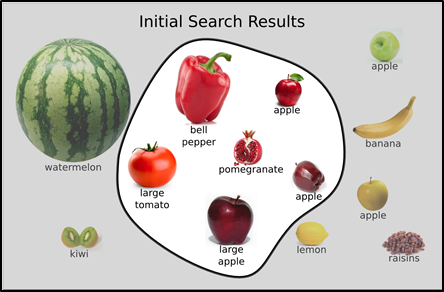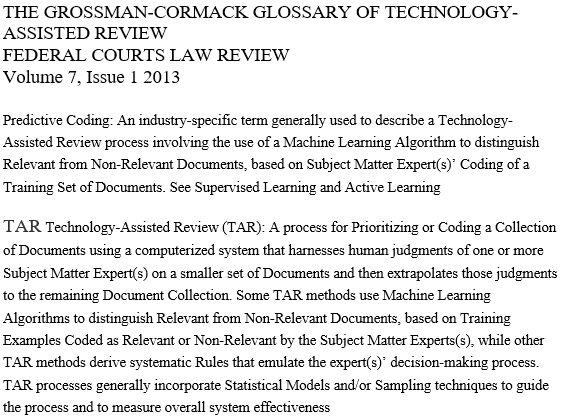Litigate or Settle? Info You Need to Make Case Decisions: eDiscovery Best Practices, Part Three
Editor’s Note: Tom O’Connor is a nationally known consultant, speaker, and writer in the field of computerized litigation support systems. He has also been a great addition to our webinar program, participating with me on several recent webinars. Tom has also written several terrific informational overview series for CloudNine, including eDiscovery and the GDPR: Ready or Not, Here it Comes (which we covered as a webcast), Understanding eDiscovery in Criminal Cases (which we also covered as a webcast), ALSP – Not Just Your Daddy’s LPO, Why Is TAR Like a Bag of M&M’s? and eDiscovery for the Rest of Us (which we also covered as a webcast). Now, Tom has written another terrific overview regarding information you need to make case decisions titled Litigate or Settle? Info You Need to Make Case Decisions that we’re happy to share on the eDiscovery Daily blog. Enjoy! – Doug
Tom’s overview is split into four parts, so we’ll cover each part separately. Part one was published on Monday and part two was published on Tuesday. Here’s the third part.
eDiscovery Considerations
So where does eDiscovery fall in this discussion? Where does it fall in the list of factors noted above which influence the decline of trials? How do we use eDiscovery to decide if a case should be settled?
First of course is the proportionality analysis that is so much a part of the current rules. Simply put, is a settlement offer reasonable within the scope of the monetary value of the litigation? If it is wildly disproportionate to the amounts in controversy, then you will need to decline the settlement offer. If it is reasonable, but not quite acceptable, then it is appropriate to make a counter-proposal.
Current eDiscovery tools for ECA and EDA can help make this determination as you are able to quickly and accurately review documents to assess damage claims and potential liability issues. Accurately identifying the documents to be handled should be a routine part of the Rule 26(f) conference and subsequent discovery plan and thus give you a confident assessment of the economic value of the case very early on.
Second is the timing of any proposed settlement. After the 26(f) conference and attendant issues have been resolved, have you received enough information to evaluate any offer or make a proposal? Or do you need more time to continue discovery and make such an assessment? This is where eDiscovery and ECA can be especially helpful since the FRCP encourage discovery and assessment of ESI at an early stage which can help in this decision.
Third, you must ask whether negotiations will be fruitful. All negotiations and any ultimate settlement require some degree of compromise by both parties and a critical factor in that process may be knowing when is the right time to negotiate.
If you have a sense in your case that emotions are running high and no negotiations are possible it may better to proceed with your ECA and simply wait until the case evolves more before attempting a settlement.
Fourth is the cost of eDiscovery which is the classic proportionality analysis. The process of eDiscovery, and thus eventually trial, will be expensive and if that expense is more than the value of the case, settlement to avoid the ultimate costs of litigation is likely a better choice.
Remember that the review portion of the eDiscovery process is typically 2/3 of the eventual total cost so your initial costs of preservation, collection, processing and ECA can give you a good ballpark figure for your total eDiscovery costs. That figure, in turn, can drive an assessment of whether settlement negotiations are in order.
Fifth if the outcome of the case is unpredictable, that is if your case appears to be a toss-up, you may be better off with a settlement. Essentially this is a risk assessment of the ultimate cost of expenses, court fees and attorney fees if you don’t win.
Finally, consider the hard to define value of business goodwill. Sometimes a reputation in the business community as being a reasonable person has a value that can’t be quantified. Your legal action may be justified, even necessary, but extensive publicity about ongoing litigation may outweigh those factors. When parties understand that a reputation in the business community has an inherent value, settlement may be a good choice.
We’ll publish Part 4 – Conclusions – tomorrow.
So, what do you think? Does your firm have a formal process for deciding whether to litigate or settle a case? As always, please share any comments you might have or if you’d like to know more about a particular topic.

Sponsor: This blog is sponsored by CloudNine, which is a data and legal discovery technology company with proven expertise in simplifying and automating the discovery of data for audits, investigations, and litigation. Used by legal and business customers worldwide including more than 50 of the top 250 Am Law firms and many of the world’s leading corporations, CloudNine’s eDiscovery automation software and services help customers gain insight and intelligence on electronic data.
Disclaimer: The views represented herein are exclusively the views of the author, and do not necessarily represent the views held by CloudNine. eDiscovery Daily is made available by CloudNine solely for educational purposes to provide general information about general eDiscovery principles and not to provide specific legal advice applicable to any particular circumstance. eDiscovery Daily should not be used as a substitute for competent legal advice from a lawyer you have retained and who has agreed to represent you.








